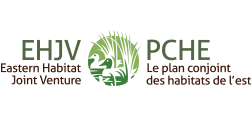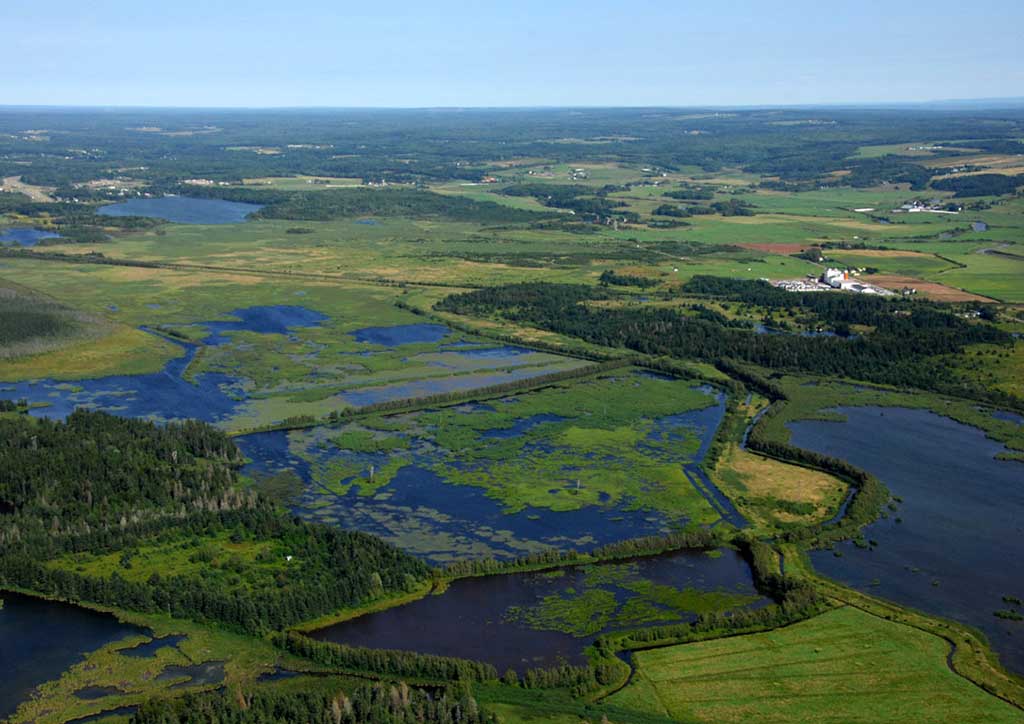Nova Scotia
Nova Scotia has 3,809 coastal islands and 7,579 kilometres of shoreline, yet it is no more than 130 kilometres at its widest point. Mining, fishing, agriculture and forestry all play a very important part in Nova Scotia’s economy. The Nova Scotia EHJV administered through Nova Scotia’s Department of Lands and Forestry, has been expanding its objectives to focus on the conservation and management of all-bird species and their habitats. The program operates under the following guiding principles:
- Conservation activities overlap agricultural sector interests (e.g., water quality and riparian health).
- Habitat conservation priorities include:
- Coastal islands with breeding populations of Common Eider and other colonial nesting birds.
- Large, contiguous salt-marsh projects.
- Private holdings within coastal management areas and sanctuaries.
- Private land stewardship is recognized as having positive effects on wetland habitat and waterfowl populations.
- Maintaining existing managed wetlands is a priority.
- Evaluation is an important component of the program – partners and funding for evaluation are identified during project planning.
Nova Scotia Partners
NS-EHJV Expenditures
January 1, 1986 – March 31, 2020

■ Stewardship/Influenced – 6%
■ Habitat Restoration (Enhanced) – 13%
■ Management – 13%
■ Habitat JV Science – 5%
■ Other Activities – 12%
Other activities include policy work, communications, education and conservation planning.
Nova Scotia Accomplishments
January 1, 1986-March 31, 2020 and January 1, 2015 – March 31, 2020* (current Implementation Plan)
| Habitat Retention |
|
|||||
| Permanent | 40,241 | 1,120 | ||||
| Medium (10-99 yrs) | 28 | 19 | ||||
| Stewardship/Influenced (< 10 yrs) | 391,279 | 3,784 | ||||
| Habitat Restoration (Enhancement) | ||||||
| Upland | 5,122 | 0 | ||||
| Wetland | 6,488 | 52 | ||||
| TOTAL** | 431,548 | 4,923 | ||||
* Activities from January 1, 1986-December 31, 1988 were completed as first step projects prior to the official formation of the EHJV
** Habitat hectares retained, restored and managed are not additive. Hectares are first secured, may then be enhanced and are subsequently placed under management.
Project Highlights
Agricultural Wetland Waterfowl Research Project
The Nova Scotia EHJV, in partnership with Acadia University, has supported an Agricultural Wetland Waterfowl Research Project in the Annapolis Valley. The multi-year project was designed to assess waterfowl importance and variation in constructed wetlands built on agricultural lands. The study investigates waterfowl brood production, invertebrate diversity/density and land-use as indicators of wetland quality for waterfowl production. Data from the project also contributed to the American Black Duck Population Habitat Model currently being developed for Maritime Canada by Mount Allison University and other partners of the Black Duck Joint Venture. The results will direct future Joint Venture habitat management activities.
Contact
VACANT


